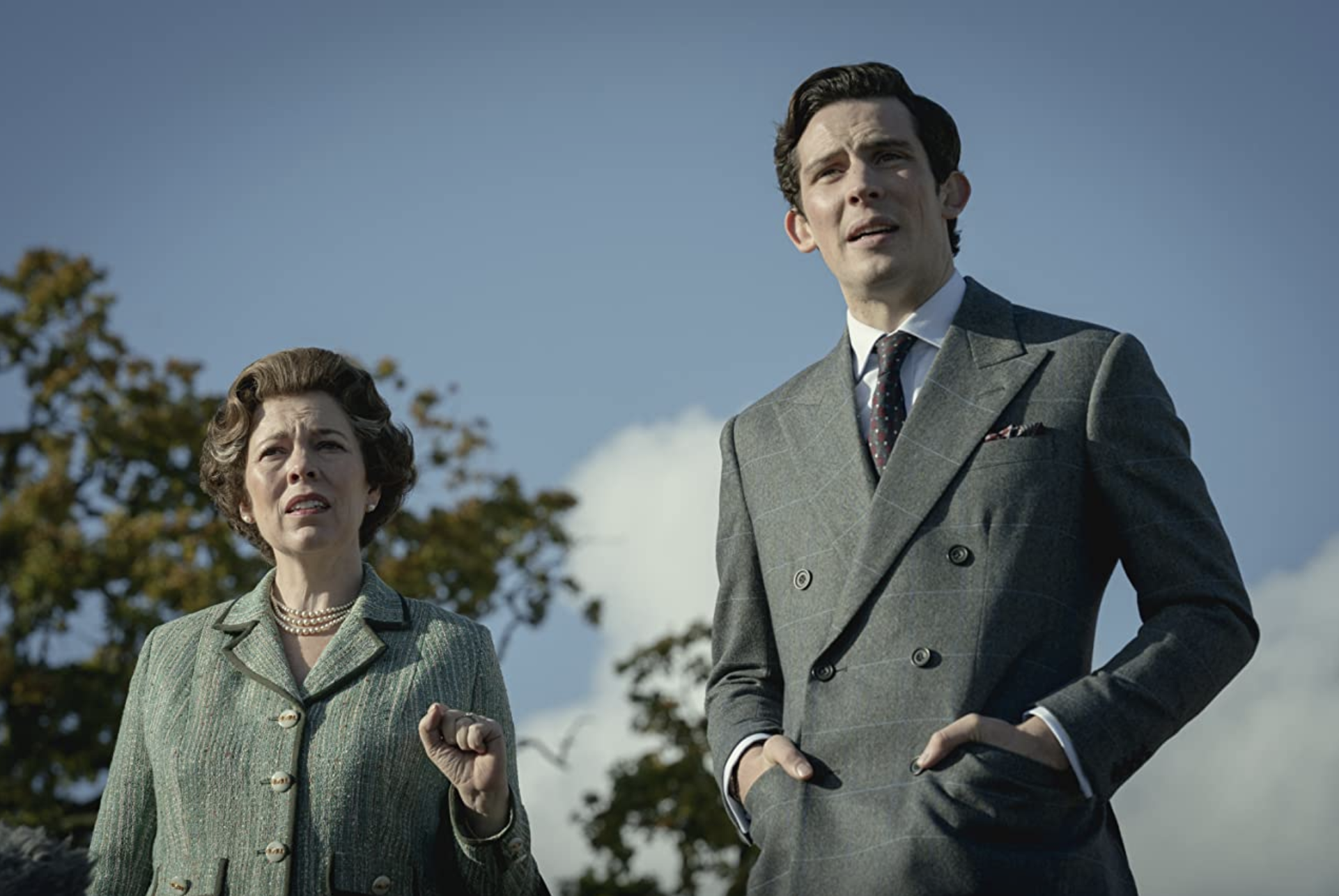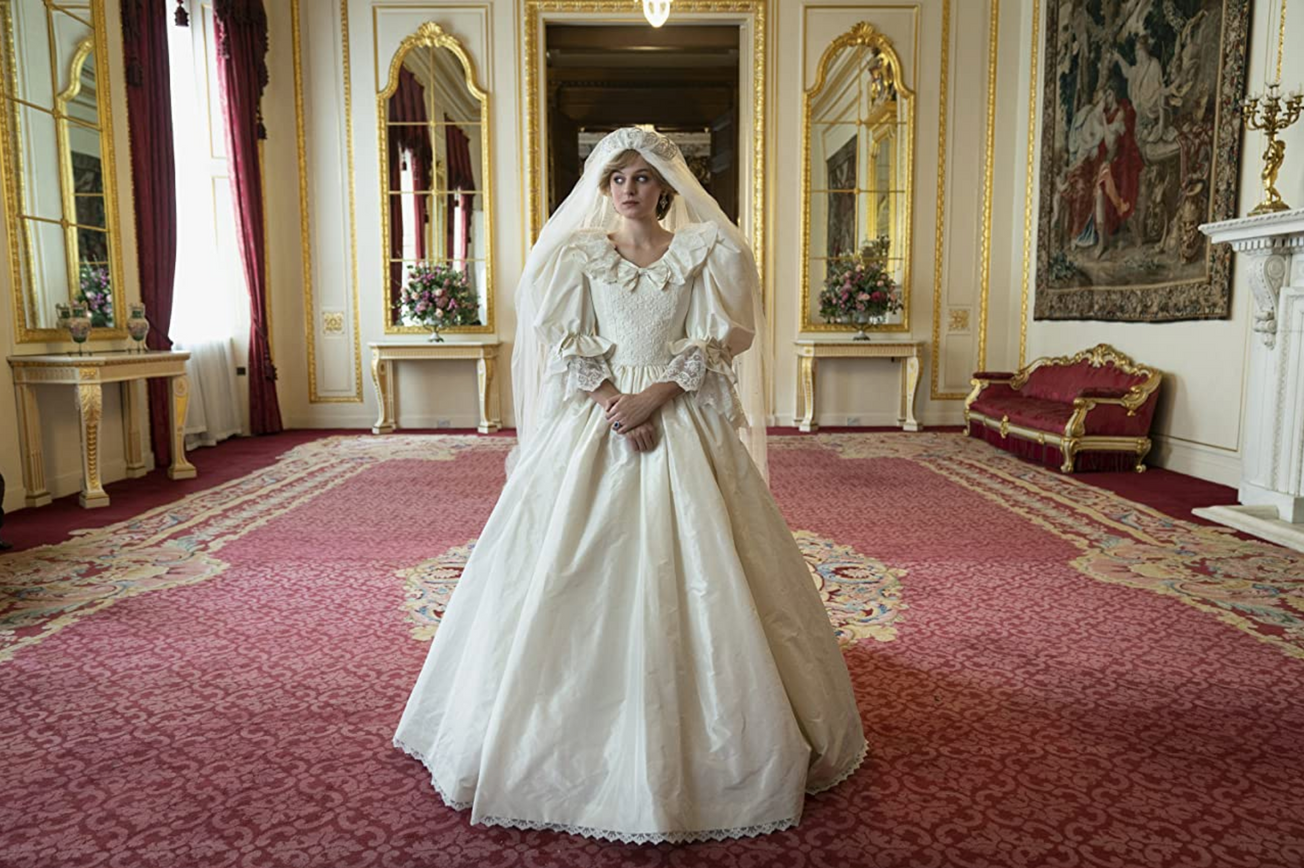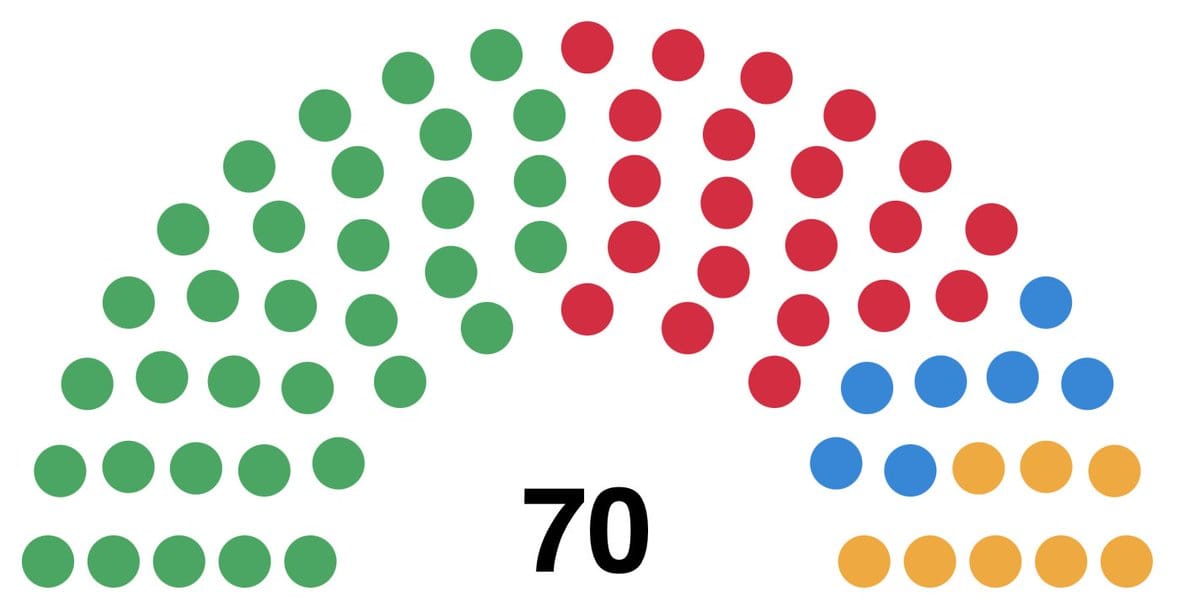By Tilly Long, Third Year, English Literature
Netflix’s The Crown (2016-) has up to this point focused on the reign of Queen Elizabeth II, beginning with a nostalgic and cinematic recreation of her life in the 1950s. The hotly anticipated fourth season, however, sees a new female protagonist thrust into the glaring limelight of the early 1980s: Princess Diana.
Everyone in this system is a lost, lonely, irrelevant outsider, apart from the one person, the only person that matters

A reception of divided critics is almost inevitable when portraying the short life and untimely demise of the ‘People’s Princess.’ As one of the most beloved members of the Royal household, her death remains raw for many who lived through the era. This show re-introduces Gen Z to her elusive figure and explains the controversies that surrounded her.
Former University of Bristol student Emma Corrin plays the young Diana with an earnest vulnerability and unawareness of the complexities of the family she is about to join. As the daughter of an Earl, she was born into a privileged aristocratic elite, yet is depicted as a relatable teenage girl, plagued by an eating disorder and mental health issues.
Although The Crown tends towards embellishment, Diana’s scenes are consistently poignant, in the sense that they give us a plausible glimpse into what may have taken place behind closed doors. Largely remembered as a tragic victim of an unsuitable arranged marriage by Britain’s oldest institution, the show chooses instead to pay tribute to the playful warmth for which she was admired and adored. She is shown roller skating around an empty palace to Duran Duran’s ‘Girls on Film,’ and dancing to Blondie with her flatmates.

As opposed to shying away from the infamous adulterous relationship between Prince Charles and Camilla Parker Bowles, the series shows cracks in the publicly perceived fairy-tale from the get go. Princess Margaret (Helena Bonham Carter) warns, ‘Charles loves someone else. How many times can this family make the mistake? Forbidding marriages that should be allowed. Forcing others that shouldn’t. Paying the consequences each time.’ Josh O’Connor expertly plays Prince Charles as a helpless pawn of the monarchic agenda; a tearful, passive conversation with his mother the night before the wedding emphasises his lack of power in choosing a wife.
Episode six even manages to evoke sympathy for the then publicly unpopular Prince, as he confesses: ‘I’ve spent my whole life being unthanked, unappreciated, uncared for… I need encouragement and the occasional pat on the back too.’ The coldness of the royal family is hinted at as being the root of Charles’ disposition.
His father admits to harbouring resentment towards him, whilst the Queen offers little emotional support when her son pleads for a divorce, asserting, ‘You will not separate.’ Diana also points out the troublingly unaffectionate nature of her husband’s parents: ‘You can barely find it in yourselves to hug your own.’
In direct contrast, Diana’s enthusiasm towards meeting the populace marks a major departure from the assumed role of the crown, which the Queen had made clear in series three: ‘As the royal family, the less we do, the better.’

Charles and his advisors try to use Diana’s deteriorating mental health as a means of preventing her solo trip to America, which she ignores, culminating in one of the most moving scenes of the show. ‘A modest hospital on the wrong side of Harlem very few American politicians have ever even thought to visit, but today this is the final stop on Princess Diana’s whirlwind tour of New York.’ Here she hugs an infant in the AIDS unit. This was seen at the time as a radical act, due to the stigma and fear that surrounded the disease. The breaking of this protocol established her as a praised figure amongst POC and the LGBT community and is framed in recreated interviews with the citizens of Harlem: ‘They don’t want her there – we would love to have her here!’
The show also captures the tumultuous events of the early 1980s in Britain under Thatcherism. The Prime Minister is unusually depicted as an underdog of sorts during a stay at the Queen’s Scottish castle, wearing heels to go hunting and failing ‘Balmoral tests’ by not fitting into what her husband refers to as a ‘half-Scottish, half-Germanic cuckoo-land.’ The setting certainly positions the royals as an absurdist result of tremendous wealth. However, this representation of Thatcher (Gillian Anderson) as a working-class hero is in itself ironic, when her legacy is marked out as a figurehead of hard-right conservatism, whose attacks on trade unionism and the deconstruction of the welfare state led to mass unemployment.
The representation of Thatcher as a working-class hero is in itself ironic, when her legacy is marked out as a figurehead of hard-right conservatism, whose attacks on trade unionism and the deconstruction of the welfare state led to mass unemployment
This is brought into sharp focus in episode five, ‘Fagan’, which uses the true story of a man who broke into the Queen’s bedroom to contrast life in a palace with bleak council estates and never-ending queues at the job centre. Fagan (Tom Brooke) is perhaps the only ‘ordinary’ character The Crown has portrayed, telling a terrified Queen (Olivia Colman) ‘I just thought it might be good for you to meet someone normal who can tell you how it is… Save us all from her. She’s destroying the country.’
Bristol Film & Television: 'Java Head'
The best films and series to stream in lockdown
This unlikely encounter leads to the Queen taking an increasingly oppositional stance towards Thatcher, warning her, ‘Shouldn’t we be careful that this medicine, like some dreadful chemotherapy, doesn’t kill the very patient it is intended to heal?’ They similarly clash in a later episode over the Prime Minister’s initial refusal to back economic sanctions against South Africa’s apartheid regime.
In July 1986, The Sunday Times claimed the Queen felt Thatcher was ‘uncaring, confrontational and socially divisive’. It is doubtful that Elizabeth II would have betrayed too many hints of her private political feelings. Moreover, as a renowned monarchist, Thatcher was not likely to have overtly criticised the royal family, which the show seems to indicate.
Featured: IMDb
Have you caught up with The Crown?









